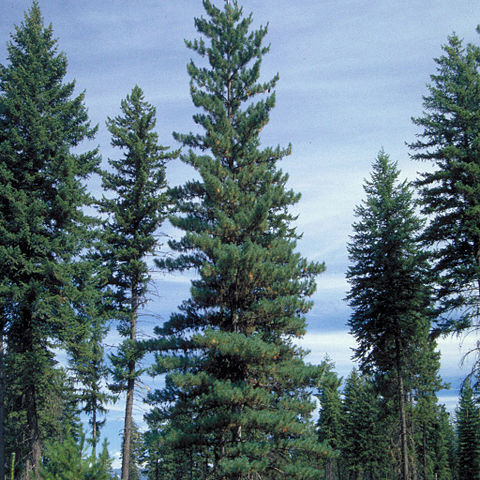A soft pine. It can grow to a very large tree. It can be 50 m high and with a trunk 150 cm across. The leaves are needle like and evergreen. They stay on the tree fro 3-4 years. They are in bundles of 5 and are 5-10 cm long. They are slender and straight and triangular in cross section. They are soft and flexible and bluish green with lines of white dots. The edges are finely toothed. The seed cones are cylindrical and 10-30 cm long. They are slightly curved and hang down. There are 90-160 scales. These curve back when dry and do not have prickles. Soon after the cones mature, seeds are shed. Seed are brown and mottled. They are 5-7 mm long and with wings 18-26 mm long.


